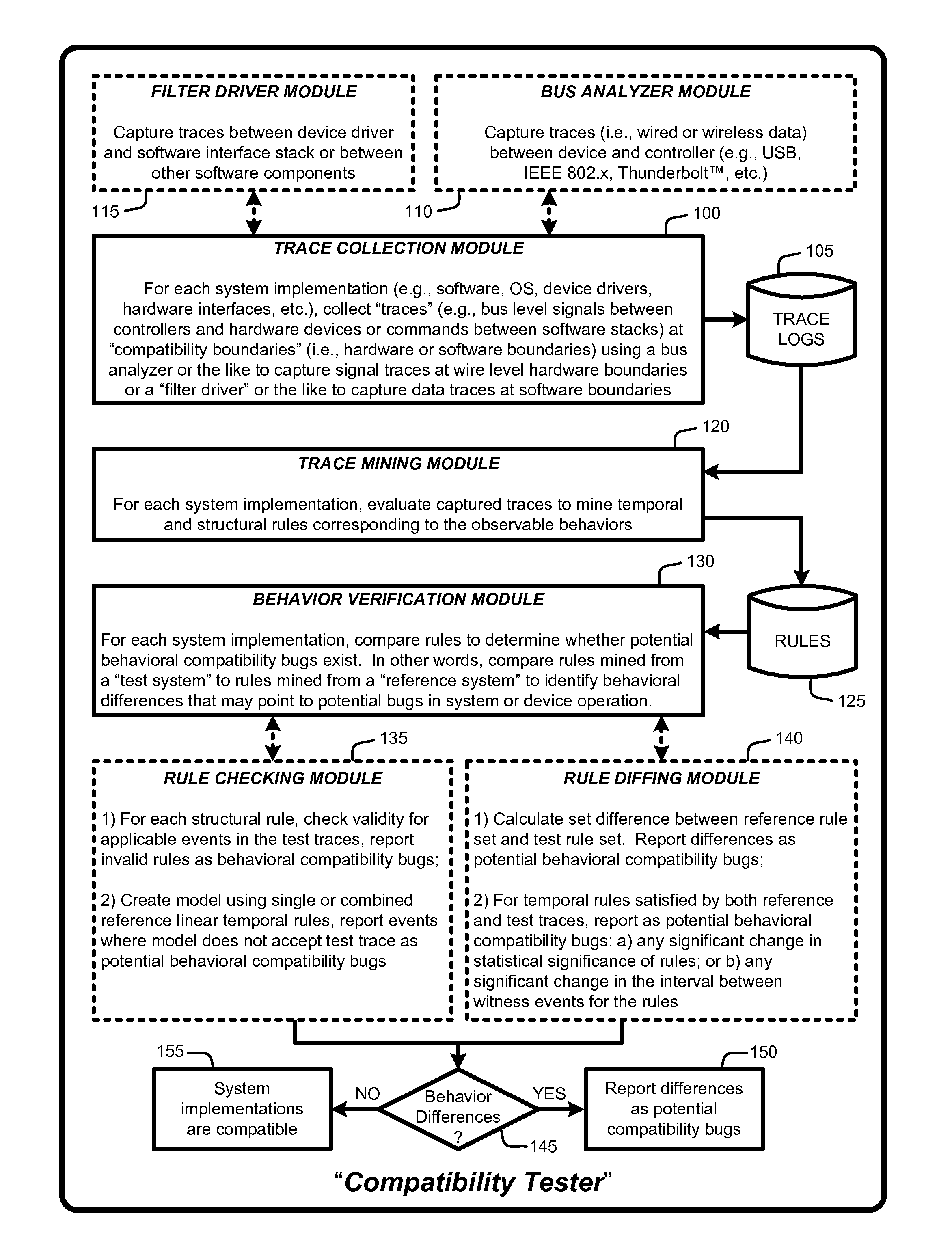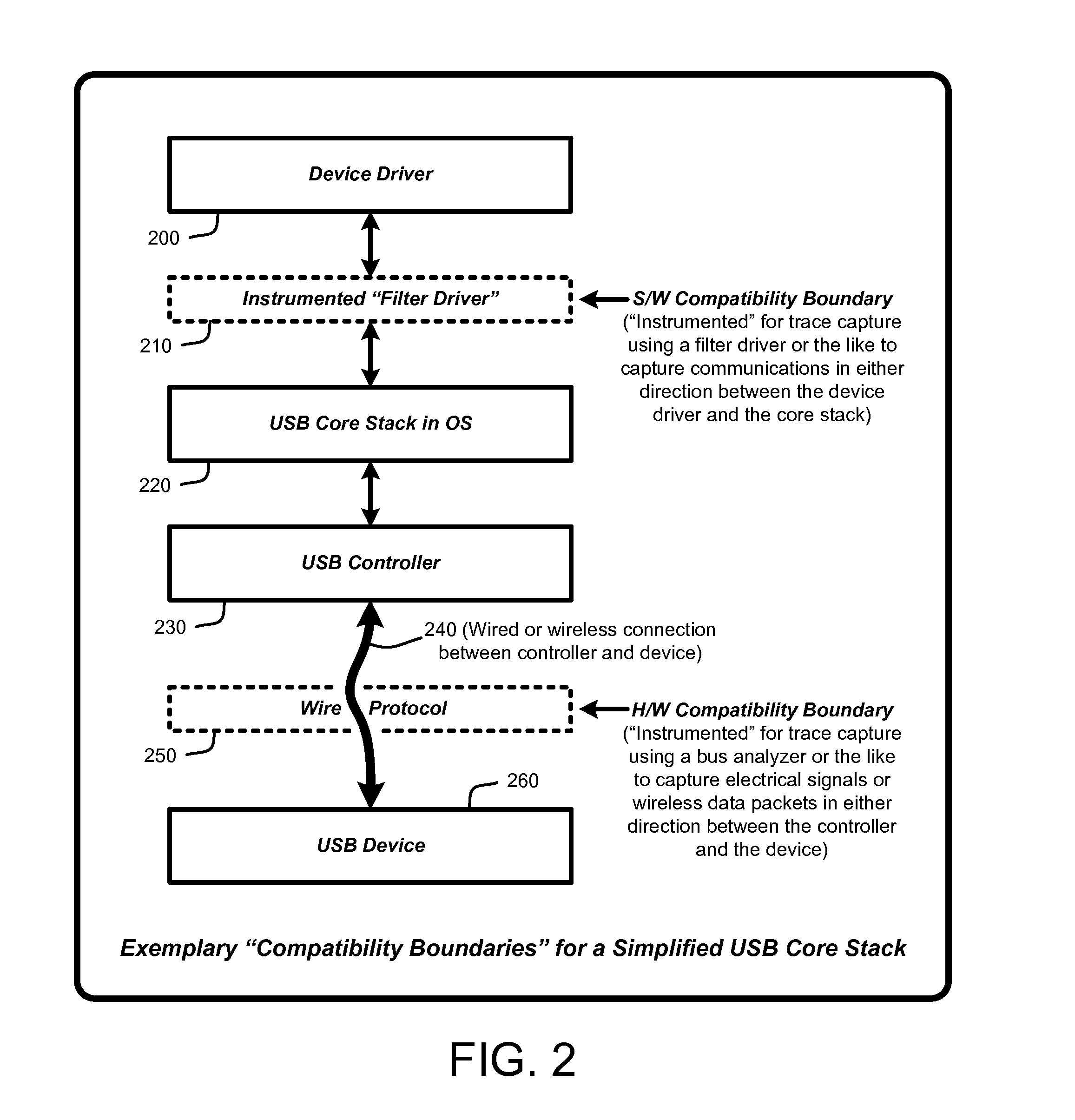Compatibility testing using traces, linear temporal rules, and behavioral models
a technology of behavioral models and compatibility testing, applied in the field of compatibility testing using traces, linear temporal rules, behavioral models, can solve problems such as potential compatibility problems, difficult compatibility testing, and extremely time-consuming
- Summary
- Abstract
- Description
- Claims
- Application Information
AI Technical Summary
Benefits of technology
Problems solved by technology
Method used
Image
Examples
Embodiment Construction
[0020]In the following description of the embodiments of the claimed subject matter, reference is made to the accompanying drawings, which form a part hereof, and in which is shown by way of illustration specific embodiments in which the claimed subject matter may be practiced. It should be understood that other embodiments may be utilized and structural changes may be made without departing from the scope of the presently claimed subject matter.
[0021]1.0 Introduction:
[0022]In general, a “Compatibility Tester,” as described herein, provides various techniques for extracting observable behaviors from different implementations of a system (e.g., software, operating systems, device drivers, hardware interfaces, devices, etc.). Those extracted behaviors are then used for compatibility testing based on comparisons of various features of the extracted behaviors. More specifically, traces (e.g., bus level signals between controllers and hardware devices or commands between software stacks ...
PUM
 Login to View More
Login to View More Abstract
Description
Claims
Application Information
 Login to View More
Login to View More - R&D
- Intellectual Property
- Life Sciences
- Materials
- Tech Scout
- Unparalleled Data Quality
- Higher Quality Content
- 60% Fewer Hallucinations
Browse by: Latest US Patents, China's latest patents, Technical Efficacy Thesaurus, Application Domain, Technology Topic, Popular Technical Reports.
© 2025 PatSnap. All rights reserved.Legal|Privacy policy|Modern Slavery Act Transparency Statement|Sitemap|About US| Contact US: help@patsnap.com



